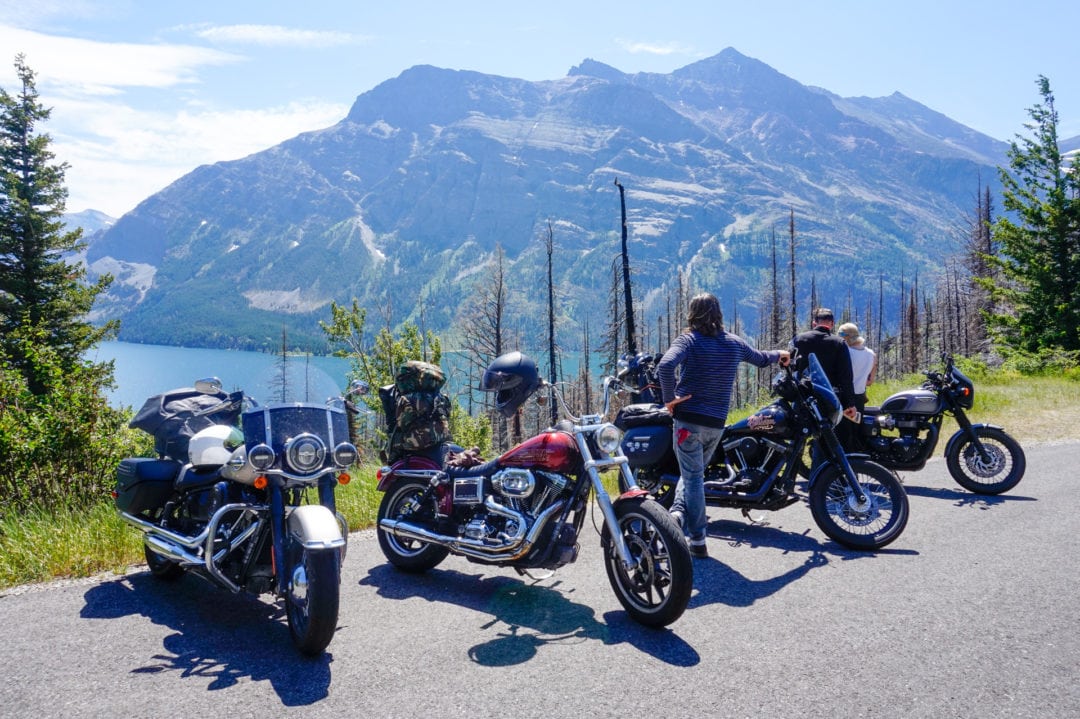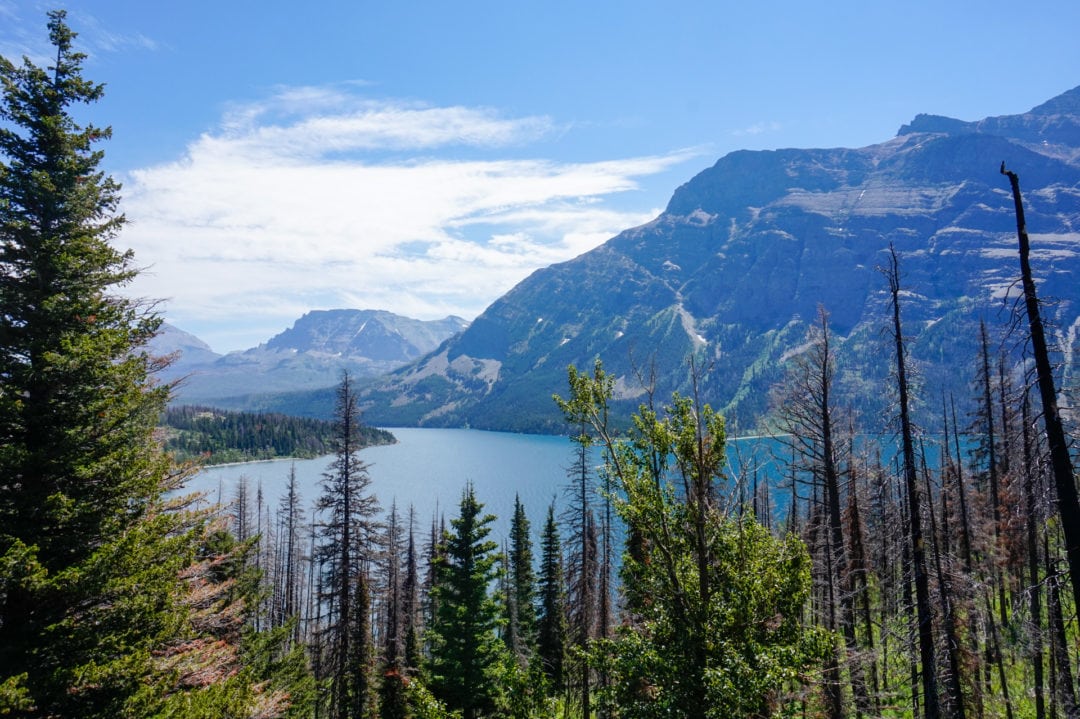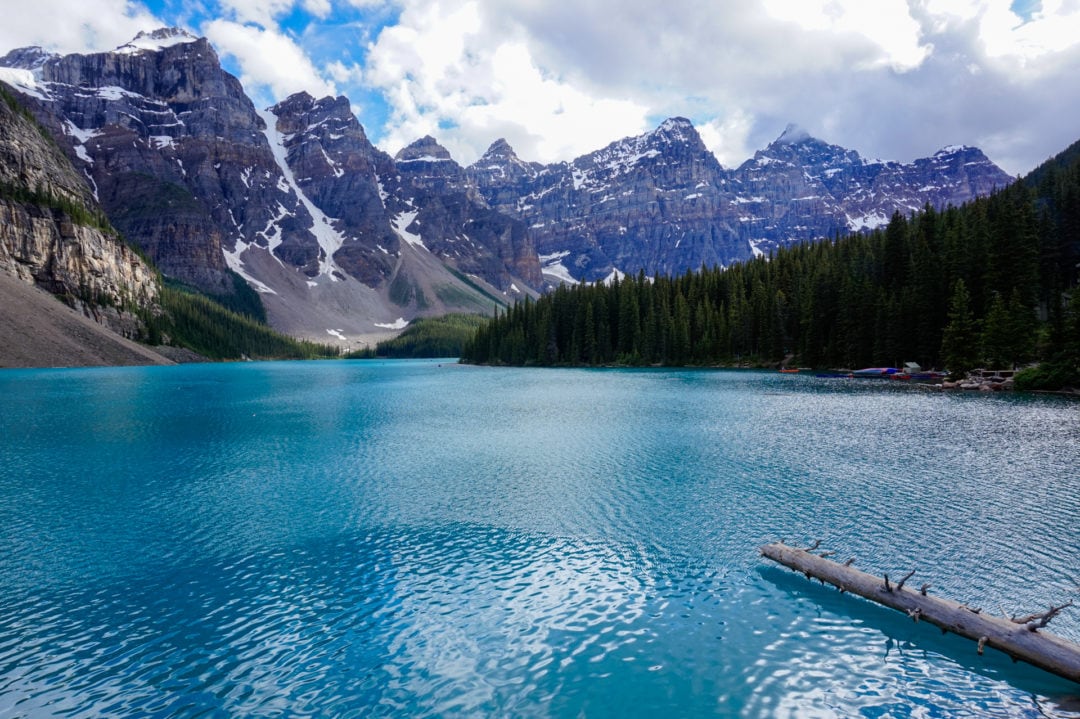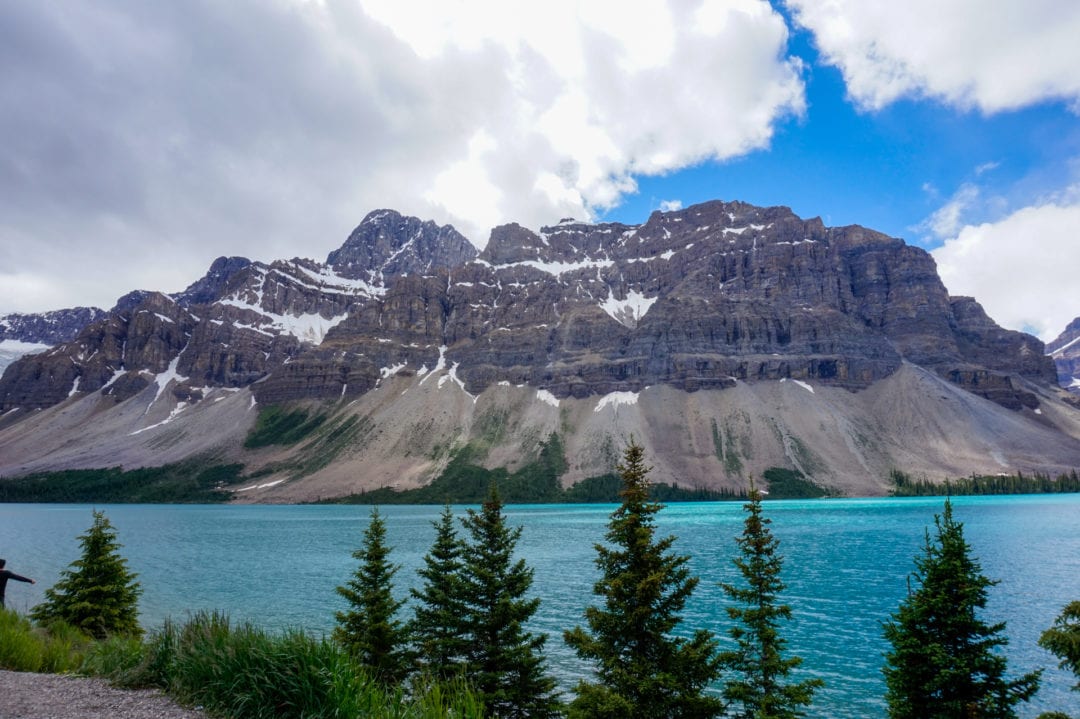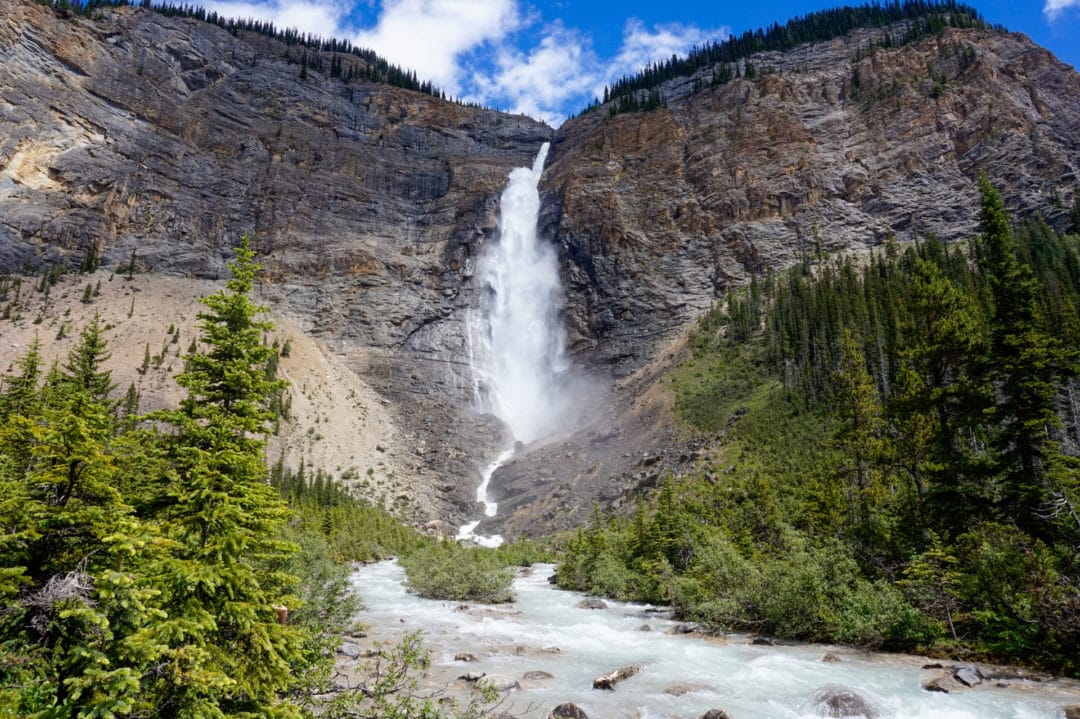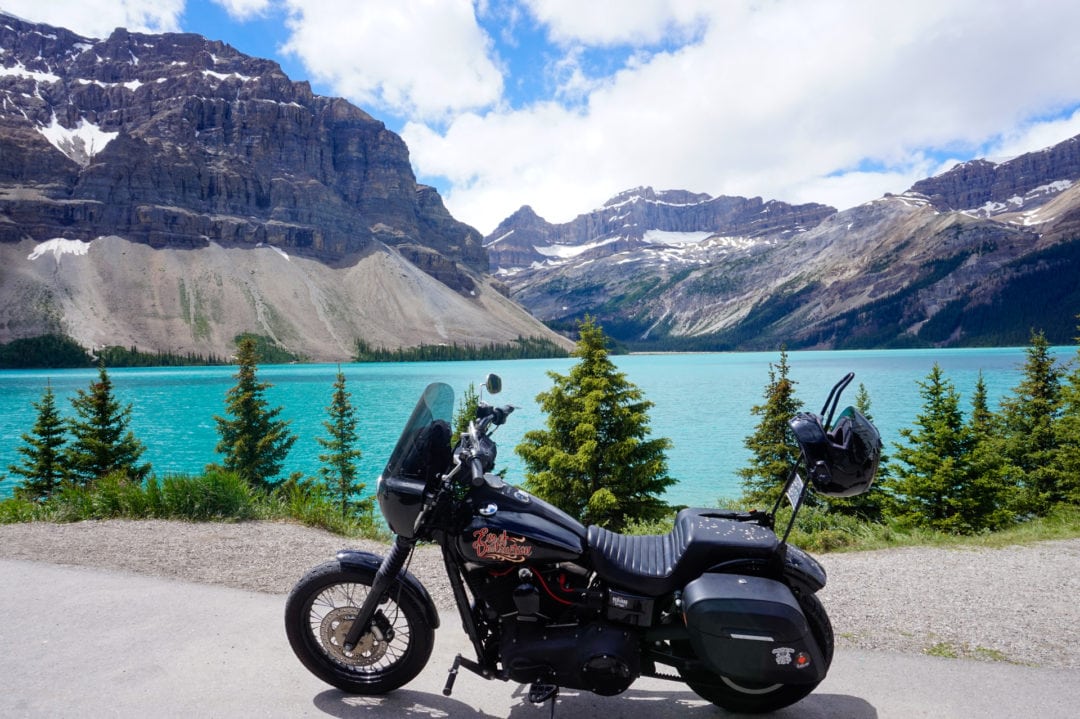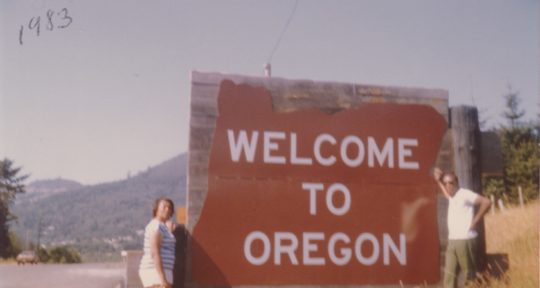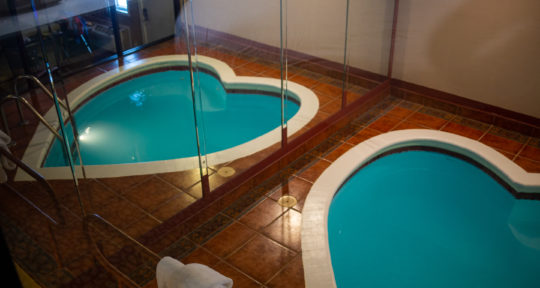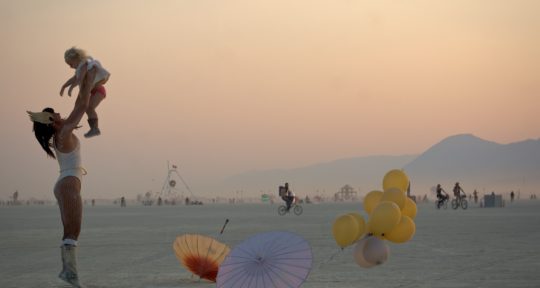There’s a scene right at the beginning of the 1969 movie “Easy Rider” where Peter Fonda glances at his watch, then tosses it to the ground. A moment later, he and Dennis Hopper kick their chopper motorcycles into gear and ride off into the desert, as Steppenwolf’s “Born to Be Wild” starts playing over the intro credits.
It’s a cliché, of course, but for bikers everywhere it also speaks to a deeper desire; the refusal to abide by society’s concept of time, and the quest for the kind of freedom you only find in the saddle of a Harley-Davidson. All while riding cross-country with a gas tank full of drug money and not a care in the world.
Remove the drug money, and you have a pretty good idea of my ideal vacation.
As a kid growing up in Sweden—far from deserts, red rocks, and quirky roadside attractions—I spent most of my life romanticizing the great American road trip. I’ve lived in the U.S. for over a decade now. Still, the idea that many of the world’s most spectacular landscapes lay so easily within reach—just a few days of driving away—taunted me.
Life got in the way, though, as it often does. And it wasn’t until earlier this year that I was able to finally take the cross-country motorcycle road trip I’d been dreaming of, in the saddle of my trusty, all-black 2015 Harley-Davidson Dyna.
In late June, after months of careful planning, we finally headed out. The caravan consisted of my boyfriend Paul, my best friend Katie, Katie’s husband Jordan, and me. The plan was to start in San Diego, California and work our way northeast, up to Banff National Park in Canada, while avoiding most major cities and highways. Admittedly, Banff was a somewhat arbitrary destination. In fact, we decided on it after I saw it on TV and instantly fell in love.
It was an atypical American motorcycle road trip in some aspects. We didn’t go coast to coast. We barely touched Route 66. And despite going from Southern California to Canada, we’d be staying far away from the coast and Highway 1.
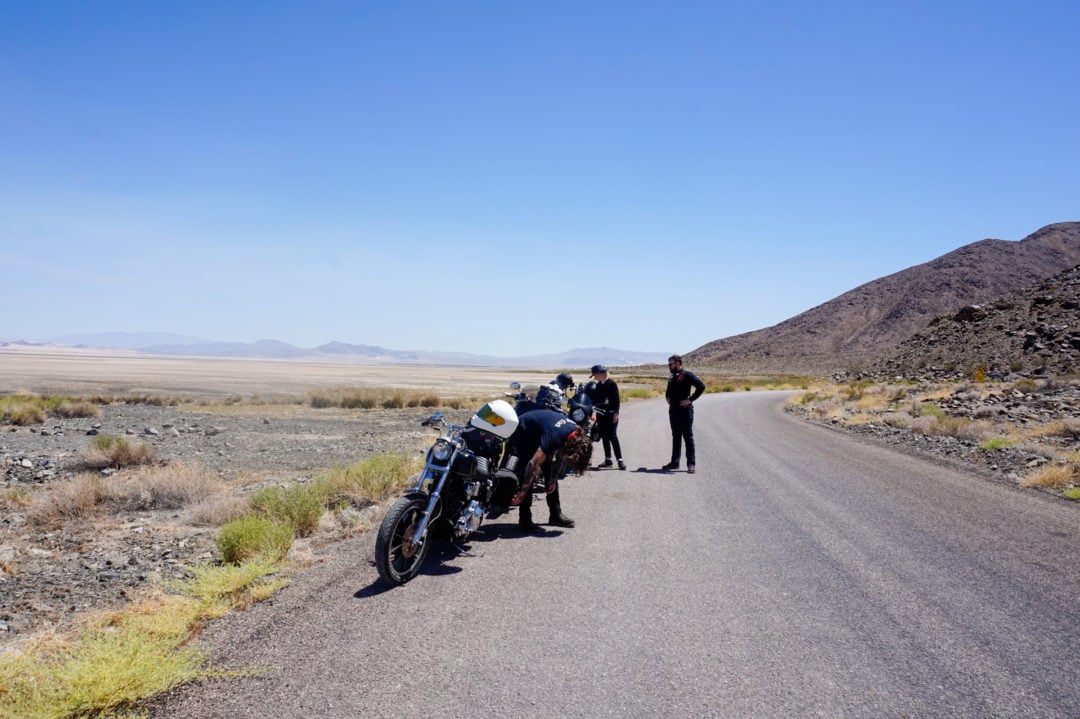
Riding motorcycles can be miserable
On our first day, we made our way from San Diego to Las Vegas, Nevada on Interstate 15. That stretch of freeway is arguably one of the worst in the west: Nothing but heavy traffic, bleak desert towns, and massive, fast-fading billboards framed by a cloudless sky. Somehow, these images underscore the relentless heat of the place.
Rolling into Nevada in late June feels almost biblical: The closer you get to Sin City, the more hellishly hot it gets, as if you’re riding into the Book of Revelation. Forget uncomfortable. On a motorcycle, wearing a full-face helmet and protective gear, 108 degrees of dry, unrelenting desert heat can be seriously dangerous. Accordingly, we decided to blaze through the hottest parts of the trip—Nevada, Arizona, and southern Utah—as quickly as possible.
Riding cross-country on a motorcycle sounds romantic—the wind in your hair, the open road, that very specific American brand of freedom captured so perfectly in “Easy Rider.” But in reality, it can be a pretty miserable experience.
You feel every change in temperature, every bump in the road, every wind gust, every straying bug swarm, every mile seated in the same position—and you feel it across your entire body. After a few hundred miles in the saddle, your body discovers new ways of being sore that you didn’t know were possible. On a cross-country trip, you’ll inevitably wish for warmer gear in the cold, and cooler gear in the heat.
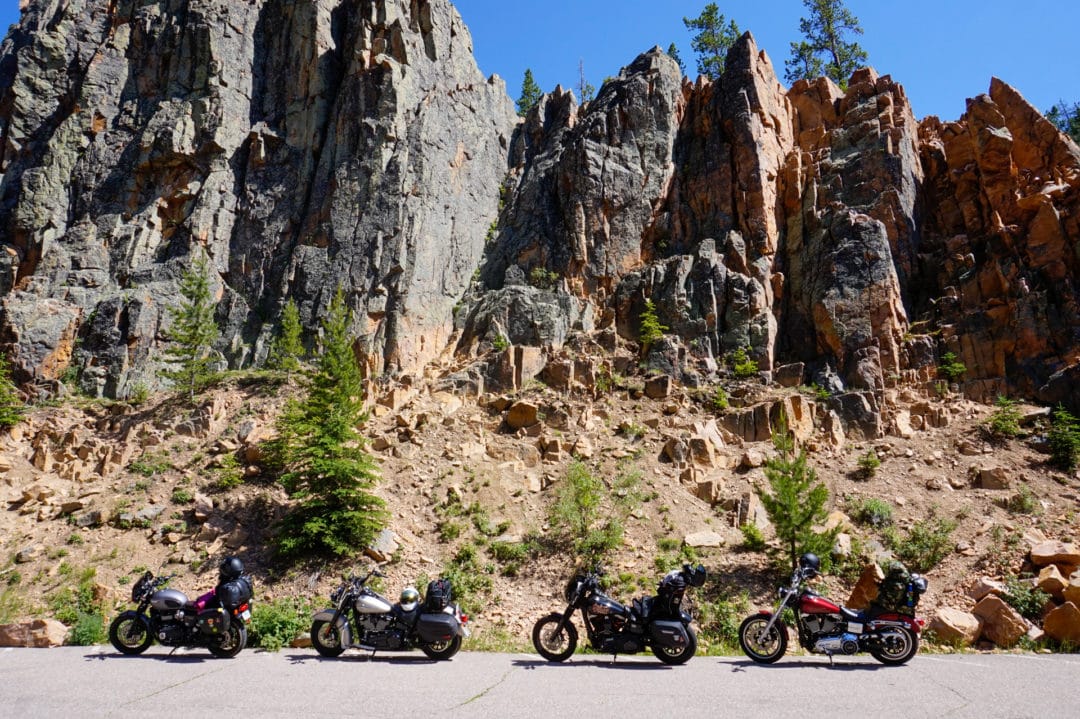
You might run out of gas or get a flat tire—no big deal in a car. On a motorcycle, though, either one can easily turn into a life-or-death situation. And yet, at any given moment, there’s nothing I’d rather be doing than picking a destination, turning up the music in my helmet speakers, and hitting the road.
And I wasn’t alone. We all had our reasons for going on this trip.
Paul was the chopper guy in our group. If it were up to him, he’d be making this journey “Easy Rider”-style: On a 1950s chopper he’d built with his own two hands. It wasn’t up to him, though. The rest of us were on newer bikes and had no desire to accommodate the type of riding you inevitably end up doing on a 70-year-old motorcycle: Slow, unpredictable, and with way too many gas stops.
Instead, Paul ended up riding his newest bike, a 1998 Harley-Davidson Dyna that we had dubbed “The Gentleman.” I bought him The Gentleman a few years ago just so he would be able to go on longer trips with me. I’d be damned if he didn’t ride it on this one.
Katie was my constant road trip companion. When we weren’t actively riding places, we were plotting our next trip. She’s a fast rider, and despite being on a 2017 Triumph Bonneville, the smallest bike in our group, the rest of us constantly had trouble keeping up.
Jordan, Katie’s husband, had survived brain cancer and a serious motorcycle accident—caused by having a seizure while riding, which is how the brain tumor was discovered—in the past few years. This would be his first longer trip since being declared cancer-free, and the first one on his brand new 2017 Dyna.
Lake view inside Glacier National Park, Montana. | Photo: Sanna Boman Lake view inside Glacier National Park, Montana. | Photo: Sanna Boman
When things don’t go as planned
We made it all the way to Beaver, Utah before our careful planning fell by the wayside. Earlier in the day, we had stopped at a roadside diner serving American “specialties,” like a “bacon cheeseburger salad” that sounded less than appealing. Shortly after getting back on the freeway, Paul’s bike started blowing dark smoke through the exhaust pipe and making very suspect noises. Finally, it just gave up completely.
In hindsight it shouldn’t have come as a shock to us. After all, despite being the newest vehicle he owned, Paul’s Harley was 20 years older than the rest of the bikes in the pack. It had only five gears compared to the six the rest of us were packing. And to top it all off, we’d spent the last 600 miles—perhaps unwisely—breaking every posted speed limit in order to get through the heat. Truly, we couldn’t fault the old bike for not being able to keep up. Now, though, we needed to turn to Plan B … and we didn’t have a Plan B.
Towing the bike to a mechanic shop was out of the question—there was none around. We could borrow a bike, but we had no friends or friends-of-friends in the area. Plus, who’s going to lend their bike for a last-minute 3,000-mile journey? We also momentarily pondered buying a new bike, but deemed that prohibitively expensive.
Ultimately, after a day and a half of trying to fix the bike in a hotel parking lot, the four of us ended up splitting the cost of a rental bike for Paul in Salt Lake City, Utah. It put a serious dent in our travel budget, but none of us wanted to see Paul go home early.
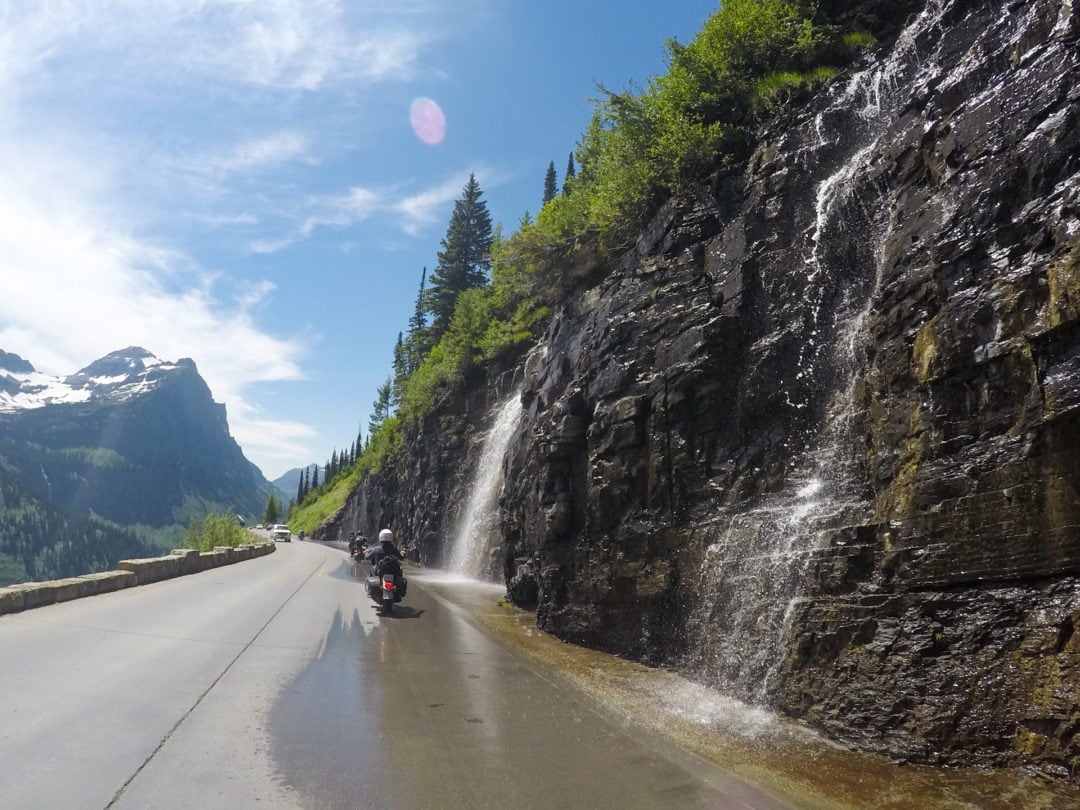
The beauty of Wyoming
At this point, we were running a day-and-a-half behind schedule, and we knew we had some catching up to do. We had a non-refundable hotel room reservation in Canada, and only a few days to get there.
Shortly after crossing into Wyoming, we pulled into a gas station to wipe dead bugs off our helmets and add an additional layer of clothing. It was a strange feeling being cold again after four days of fighting heat exhaustion in the desert.
“Be very careful; these roads are full of deer,” an older gentleman on a BMW motorcycle warned us.
Normally, I avoid riding through wildlife areas in the dark. Hitting a deer on a motorcycle could easily be a death sentence—for you and the deer. But as the old biker saying goes, “Loud pipes save lives.” I suspect the combined noise and vibration from our four motorcycles spooked wildlife back into the wilderness miles before we got close to them.
IT NEVER CEASES TO SURPRISE ME HOW THIS COUNTRY CAN BE SO HUGE AND SO TINY AT THE SAME TIME.
And that’s a good thing, since we found ourselves getting increasingly distracted by the Snake River, which runs through a deep canyon alongside Wyoming Highway 89 just south of Jackson. As the sun was setting behind us and the sky gradually turned vermilion in our rearview mirrors, the river roaring below the cliffside to our right was reflecting the sky back to us for miles and miles.
Surrounded by mountain and forest on one side, and the sunset-tinted river on the other, the four of us rode in collective awe until the sun finally disappeared completely—and with it, any real or imagined sense of warmth.
A few freezing miles later, we rolled into Jackson and stopped at a grocery store. Randomly, Paul ran into an old friend—at 11 p.m. on a Tuesday, 1,000 miles from home. It never ceases to surprise me how this country can be so huge and so tiny at the same time.
An overwhelming sense of presence
One of my favorite parts of any ride with friends is stopping for the night and finally getting a chance to compare notes from the day.
Roadtripping on a motorcycle is by default a pretty solitary activity. In some ways it’s easier than the car equivalent; there are no awkward moments of silence, no fights over music selection, and each person is allowed the privacy of their own helmet for hours at a time. But you also miss out on experiencing things together, commenting on sights and events as they pass by in real time.
The hotel we ended up at on the evening of the Fourth of July was perched on the edge of the Yellowstone River in Gardiner, Montana, with a big porch that gave us front row seats to a Montana-style fireworks show. We were right outside of Yellowstone National Park, as evidenced by the town’s backdrop of green rolling hills.
That night, as we’d done every night, we ran through our stand-out memories from the day. We joked about the giant antlerless deer we saw on the side of the road that turned out to not be a deer at all, but a female moose. We remembered in horror the sign at the edge of Yellowstone that read “Motorcycles, use extreme caution.” A moment later, the pavement disappeared beneath us, and was replaced by gravel, dirt, and potholes.
We also reminisced about the many lakes, mountains, hot springs, waterfalls, and wild animals we rode past that day, including a pack of bison out for a stroll down the middle of the road, a mere few feet from our bikes.
Robert M. Pirsig wrote in Zen and the Art of Motorcycle Maintenance: “In a car you’re always in a compartment, and because you’re used to it you don’t realize that through that car window everything you see is just more TV. You’re a passive observer and it is all moving by you boringly in a frame. On a cycle the frame is gone. You’re completely in contact with it all. You’re in the scene, not just watching it anymore, and the sense of presence is overwhelming.”
Being so close to a group of 1,400-pound wild animals that we could have reached our hands out and touched them was definitely proof in support of Pirsig’s point.
Moraine Lake in Banff National Park. | Photo: Sanna Boman Bow Lake in Banff National Park. | Photo: Sanna Boman Takakkaw Falls in Yoho National Park. | Photo: Sanna Boman Bow Lake in Banff National Park. | Photo: Sanna Boman
Making it to Canada
When we finally crossed into Canada, the Canadian border officer pointed to an embroidered patch on my vest that read, “More Trees, Less Assholes.”
“I have a t-shirt that says the same thing,” she exclaimed cheerfully. I instantly knew I was going to like Canada.
Even though we were only halfway through, making it to Canada felt like an accomplishment in itself. We had made our way across the entire continental U.S. We snaked through deserts and red rocks in Nevada and Utah, mountains and national parks in Wyoming, and farmlands and small towns in Montana. Finally, we had crossed international borders to arrive in Canmore, Alberta, only a few miles outside of Banff National Park.
During our very first gas stop on the first day of the trip, still in Southern California, we had crossed paths with a fellow motorcyclist who was on his way back to Los Angeles after completing almost exactly the same trip we were on. Back then, a week and a lifetime ago, making it to Canada without any major issues had felt mildly unrealistic.
Now, we were here, surrounded by snow-tipped mountains and bright turquoise lakes. Our bodies ached—four hundred miles per day on a loud, vibrating, non-ergonomic go-fast machine will do that to you. However, we were already getting sad about having to head back home.
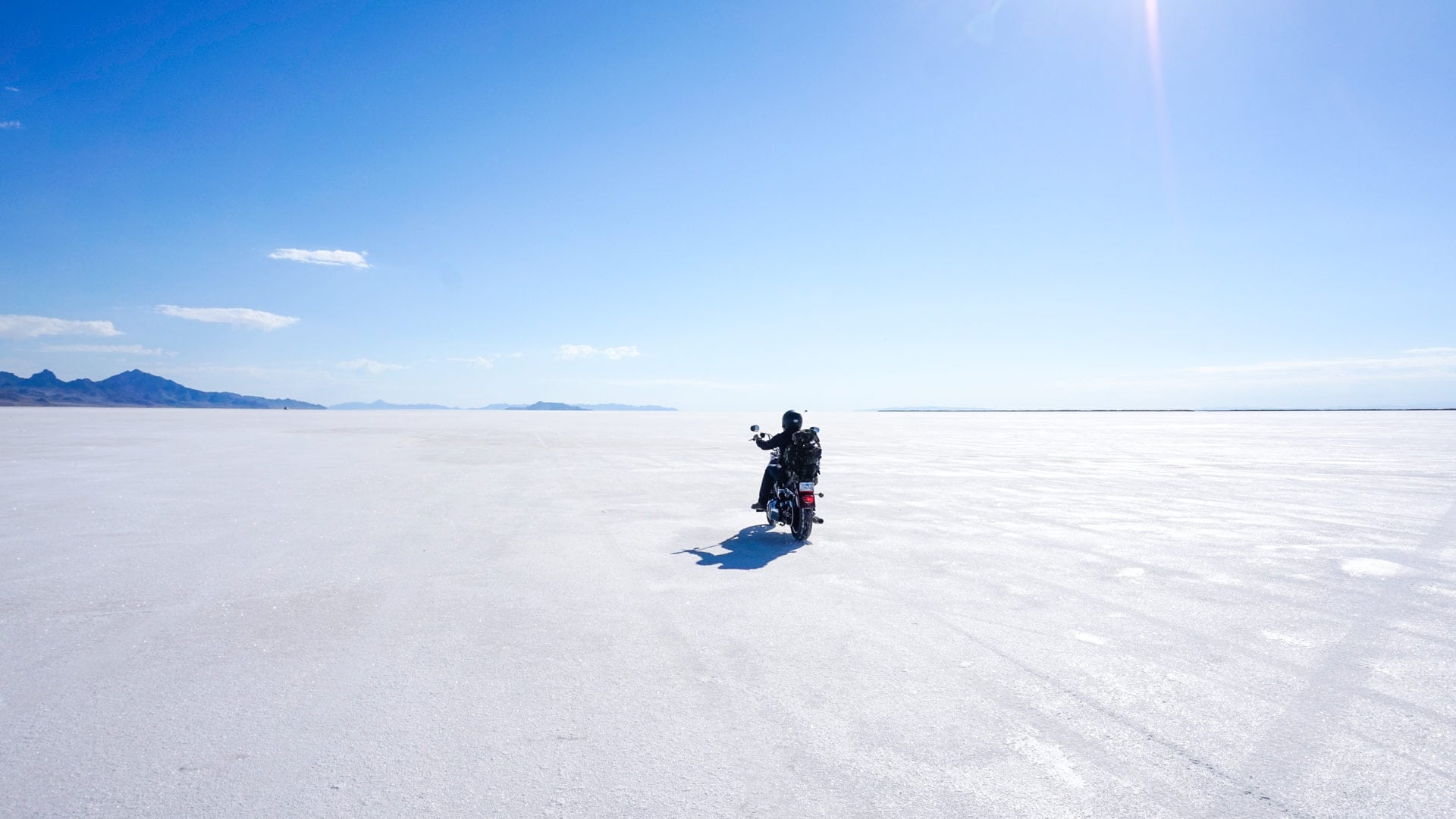
Bonneville is an otherworldly experience
On the second-to-last day of our trip, we woke up on the Nevada side of Wendover, a sleepy resort town that straddles a northern part of the Utah-Nevada border. We had originally booked a room on the Utah side of town, but as soon as we arrived, we realized our mistake. The Nevada side resembled a miniature Las Vegas, with neon signs advertising casinos and liquor stores.
The Utah side, however, seemed largely abandoned. We saw virtually no people, and the whole place had an eerie, almost post-apocalyptic vibe about it. We quickly canceled our reservation and headed across the state line, straight to the nearest casino.
The reason we had ended up in Wendover—a 120-mile detour from our homebound route—was its proximity to the Bonneville Salt Flats. As the venue of numerous land speed records, the Bonneville Speedway had been on all our bucket lists for years.
In just the past few days, we had ridden through some of North America’s most beautiful national parks. We had oohed and ahhed our way past some views so spectacular that it would take a lifetime to truly process. But nothing had quite prepared us for Bonneville; it’s a unique landscape so flat, barren, and bright white that it appeared otherworldly.
With no other people or vehicles in sight, Jordan was the first of us to open up his throttle and disappear into the vast whiteness of the salt. Katie and I quickly followed, with Paul on the back. His rental agreement specifically prohibited him from riding his bike on any salt flats.
Katie was excited to ride her Triumph Bonneville on the land for which it was named. I was mostly trying to not get lost—the salt stretched so far in every direction that we almost lost track of which way we had entered it.
Plunging headfirst into danger
We were only a few days from home, and Bonneville was the last major stop on the tour. The forecast promised sunshine, and the roads lay empty ahead. The rest of the way should be smooth sailing.
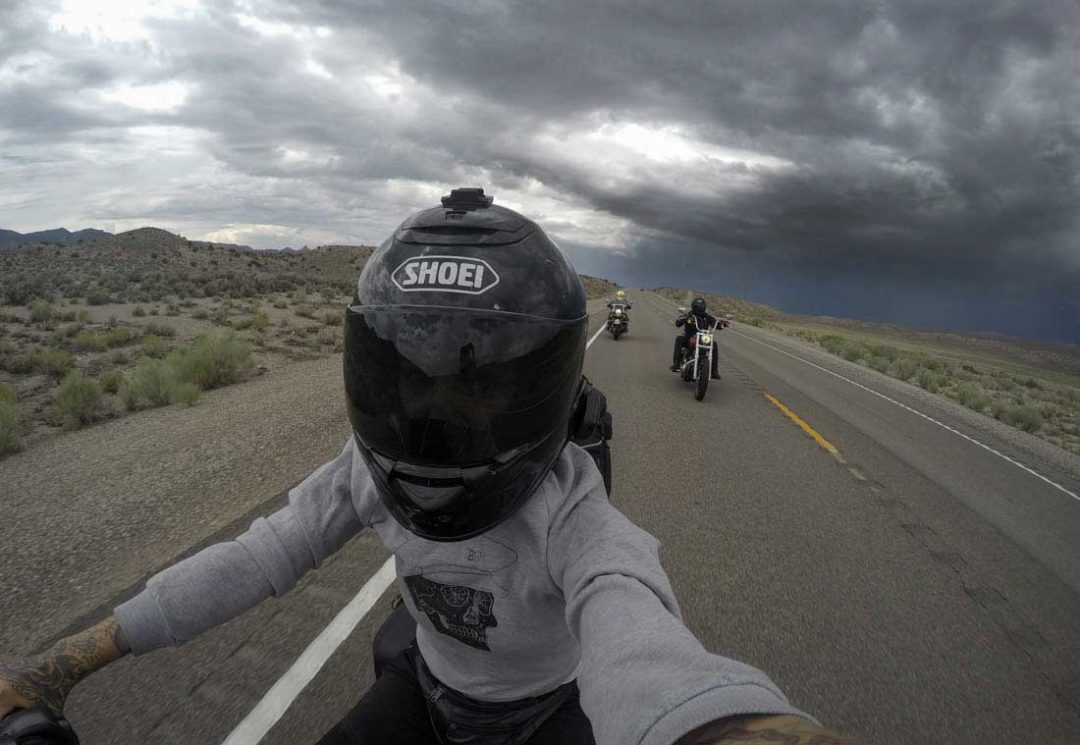
As we made our way south through the desolate wasteland that is the state of Nevada, we realized it had been naive to think we’d make it all the way home without hitting some bad weather. From one minute to the next, the sky was suddenly scattered with thunderstorms—when one disappeared behind us, another would take its place. For many miles, though, we somehow managed to not get hit by any rain. The tiny desert road we were on seemed to have been built specifically to avoid these hyper-localized storms.
Then, out of nowhere, a menacing wall of darkness appeared ahead of us, swallowing the road like it was a train going into a tunnel. It looked like something out of a movie. It was impossible to tell whether we were about to steer into the eye of a storm or a portal to another dimension. I was telepathically trying to urge Katie, who was leading the group, to stop and turn around. But there was nowhere to stop or turn, not even to put on rain gear. We had no choice but to keep moving forward, into the darkness.
Riding straight into this storm was one of the most terrifying and exhilarating things I’ve ever done. The temperature dropped noticeably. And between the golf ball-sized raindrops and the sudden absence of daylight, I couldn’t see more than a few feet ahead of me. Within seconds my clothes were completely soaked. I realized then that the open air filter on my bike was going to start sucking water into the motor. Forced to pull over on a narrow stretch of shoulder, I was silently praying that no cars would hydroplane into me while I put a cover over the air cleaner.
NOTHING MAKES YOU FEEL AS ALIVE AS PLUNGING HEADFIRST INTO DANGER AND ESCAPING UNSCATHED.
The storm only lasted for a couple of miles, but it felt like a lifetime. When I finally got out on the other side, I was overwhelmed by equal parts relief and adrenaline. I jumped off the bike laughing, fueled by a false sense of invincibility. Nothing makes you feel as alive as plunging headfirst into danger and escaping unscathed.
It was the first truly dangerous situation we’d encountered on this trip. So, it was only fitting that it would happen on the last day of riding before heading back to San Diego—when we’d let our guards down and allowed ourselves to think we’d already made it.
A few hours later, we were back in Las Vegas, stuck in rush hour traffic and surrounded by tall buildings and bright lights. It was a striking contrast to the last two weeks of being far from civilization and other people.
In just 14 days, we had ridden 4,300 miles through seven states and two countries. And rather than feeling relieved that we were almost home, we all agreed we’d rather turn around and head back through that storm than return to normal life again.
